
Roots
Have you ever held a single strand of coily hair, perhaps a whisper-thin filament, and pondered the vastness of its story? It appears delicate, yet within its spiraled form lies a complex universe of biology and heritage. The very nature of coily hair, with its remarkable spring and profound depth of color, often presents a paradox ❉ a visual vibrancy that belies a persistent yearning for moisture. This enduring question of why coily hair seems to lose hydration so readily calls us to look beneath the surface, to the very foundations of its being.
We are invited to understand its architecture, to listen to the whispers of its cellular structure, and to honor the ancestral echoes that shape its unique existence. It is here, at the elemental beginning, that we commence our exploration, seeking not just answers, but a deeper connection to the science and spirit of coily strands.

The Intricate Architecture of Coily Hair
At the heart of coily hair’s unique hydration dynamics lies its distinct anatomical blueprint. Unlike straight or wavy hair, which often grows from a round or oval follicle, coily hair emerges from an elliptical, often S-shaped follicle that curves beneath the scalp. This singular follicular shape dictates the spiraling growth pattern of the hair shaft itself. This highly curved structure creates natural points of vulnerability, where the hair shaft experiences varying degrees of stress.
Consider the outermost layer of the hair, the Cuticle. This protective shield consists of overlapping, scale-like cells, much like shingles on a roof. In straight hair, these cuticles tend to lie flat and smooth, forming a relatively unbroken barrier. For coily hair, however, the intense curvature of the strand means these cuticle scales often do not lie as uniformly flat.
Instead, they can be naturally lifted or prone to lifting, particularly at the sharp turns of the coil. This subtle elevation of the cuticle scales creates microscopic pathways, inviting moisture to escape from the hair’s inner core with greater ease. This structural characteristic contributes significantly to the perception of dryness.
Beneath the cuticle lies the Cortex, the primary bulk of the hair shaft, composed of keratin proteins. The cortical cells within coily hair are arranged in a manner that reflects its unique curvature, sometimes exhibiting an asymmetric distribution of different cell types. This internal arrangement, influenced by the follicular shape, contributes to the hair’s spring and resilience, yet it also plays a part in its hydration story.
The very architecture of coily hair, from its elliptical follicle to its lifted cuticle scales, inherently predisposes it to a greater loss of internal moisture.

The Sebaceous Journey and Its Challenges
Another fundamental aspect of coily hair’s moisture balance is the journey of natural oils, known as Sebum, from the scalp. Sebum is produced by sebaceous glands attached to the hair follicles, providing a natural conditioning and protective layer to the hair shaft. For straight hair, this oil can glide down the relatively smooth, linear shaft with little impediment, distributing its nourishing properties along the entire length.
With coily hair, the story changes. The tight, spiraled pattern of the hair shaft creates a challenging terrain for sebum to traverse. The natural oils struggle to travel down the coils, often remaining concentrated near the scalp.
This means the ends of coily hair, the oldest and most exposed parts of the strands, receive far less of this natural lubrication, leaving them more susceptible to dryness and environmental stressors. This uneven distribution of sebum is a primary contributor to the dryness often associated with coily textures.

Understanding Hair Growth Cycles and Influencing Factors
The life cycle of a hair strand, from its active growth phase to its resting and shedding stages, also plays a role in the overall health and perceived moisture of coily hair. While the fundamental phases—anagen (growth), catagen (transition), and telogen (resting)—are universal, intrinsic and extrinsic factors can influence their timing and synchronicity, potentially impacting hair quality over time. Environmental conditions, nutritional intake, and even styling practices can exert subtle pressures on these cycles.
Each hair strand has a finite life, and as it ages, its outermost layers can experience wear and tear, further compromising its ability to retain moisture. For coily hair, which can be more prone to mechanical manipulation due to styling and detangling, this cumulative effect of age and handling can exacerbate dryness.
| Hair Type Feature Follicle Shape |
| Coily Hair Characteristics Elliptical, S-shaped |
| Impact on Moisture Directs spiraled growth, creates stress points. |
| Hair Type Feature Cuticle Layer Alignment |
| Coily Hair Characteristics Often lifted or less uniformly flat |
| Impact on Moisture Allows moisture to escape more readily. |
| Hair Type Feature Sebum Distribution |
| Coily Hair Characteristics Challenges in traveling down the shaft |
| Impact on Moisture Leaves mid-lengths and ends prone to dryness. |
| Hair Type Feature These foundational differences highlight the biological predispositions of coily hair towards moisture loss. |

Ritual
As we step beyond the foundational understanding of coily hair’s inherent structure, we find ourselves in the realm of daily practice—the sacred rituals that shape our hair’s existence. The journey of caring for coily hair is often a thoughtful dance between science and intuition, a testament to the wisdom gleaned from generations of care. Understanding why coily hair thirsts for hydration also requires a look at how we interact with it, the products we choose, and the rhythms we establish.
This section invites us to consider the practical dimensions of moisture retention, recognizing that our deliberate actions can either soothe or exacerbate its natural tendencies. We will consider the ways in which our routines, from cleansing to protection, play a significant part in the ongoing conversation about coily hair’s hydration.

The Porosity Puzzle
One of the most frequently discussed aspects of coily hair is its Porosity. Hair porosity refers to the hair’s ability to absorb and retain moisture. This is largely determined by the state of the cuticle layer.
When cuticles are tightly closed and smooth, the hair is considered low porosity; it resists moisture absorption but retains it well once absorbed. When cuticles are raised or open, the hair is high porosity; it readily absorbs moisture but also loses it just as quickly.
Coily hair is frequently characterized by high porosity. This means that while water and conditioning agents may initially penetrate the hair shaft with ease, they can also evaporate or dissipate swiftly, leaving the hair feeling dry again in a short period. This rapid exchange of moisture with the environment necessitates a mindful approach to hydration, emphasizing strategies that not only deliver water but also seal it within the strand.
Research presented at the TRI/ITC Multi-Ethnic Hair and Scalp Care Symposium, for instance, showed that very curly hair does indeed swell more than straighter hair types, supporting the consumer perception of higher porosity in these textures. This increased swelling indicates a greater capacity for water uptake, but also a potential for rapid release.
High porosity in coily hair means it eagerly welcomes moisture, yet just as quickly bids it farewell, underscoring the need for intentional sealing practices.

The Cleansing Conundrum and Conditioning Cadence
The very act of cleansing can inadvertently contribute to moisture loss in coily hair. Many traditional shampoos contain harsh sulfates that, while effective at removing dirt and product buildup, can also strip the hair of its natural oils, leaving it feeling parched and brittle. For coily hair, which already faces challenges with sebum distribution, over-cleansing or using stripping products can be particularly detrimental.
A gentle, sulfate-free shampoo is a kinder choice, respecting the hair’s delicate moisture balance. The cadence of washing also matters; limiting hair washing to perhaps once a week helps prevent overstripping necessary oils. Following cleansing, conditioning becomes a paramount ritual.
Deep conditioning treatments are not merely a luxury but a necessity, providing concentrated hydration and nutrients that replenish the hair shaft. These treatments help to smooth the cuticle, reducing moisture escape and improving the hair’s overall resilience.

How Does Product Selection Influence Moisture Retention?
The ingredients within hair care products play a significant role in the ongoing battle against dryness. Products laden with humectants, ingredients that draw moisture from the air, can be a double-edged sword. In environments with moderate humidity, humectants can be beneficial, pulling water into the hair.
However, in high humidity, they can cause the hair to absorb too much water, leading to frizz and loss of curl definition. Conversely, in very dry climates, humectants might draw moisture out of the hair, leaving it drier than before.
Conversely, products with Emollients and Occlusives become vital. Emollients, such as natural oils and butters, help to soften and smooth the hair, while occlusives create a protective barrier on the hair surface, sealing in the moisture that has been introduced. Oils like coconut, argan, or jojoba are excellent choices, forming a barrier on the hair shaft that helps prevent external humidity from disrupting the hair’s moisture balance.
- Shea Butter ❉ A rich emollient, providing deep conditioning and a protective layer.
- Glycerin ❉ A powerful humectant, best used in moderate humidity to draw moisture to the hair.
- Aloe Vera ❉ A soothing humectant that also offers light conditioning.

The Nighttime Sanctuary ❉ Essential Sleep Protection
The hours spent sleeping can inadvertently contribute to moisture loss and mechanical damage for coily hair. Cotton pillowcases, with their absorbent fibers, can draw moisture from the hair, leaving it dry and rough. The friction created by tossing and turning on cotton can also lead to tangles, breakage, and lifted cuticles.
The simple ritual of protecting hair at night can significantly impact its moisture retention. Sleeping on a Satin or Silk Pillowcase or covering the hair with a Satin or Silk Bonnet reduces friction, minimizing breakage and helping to preserve the hair’s hydration. These smooth surfaces allow the hair to glide, preventing tangles and maintaining the integrity of the cuticle layer. This seemingly small step is a powerful act of care, ensuring the efforts of daily hydration are not undone overnight.
Beyond material choice, specific nighttime styling can also protect strands. Loose twists or braids can keep coils aligned, preventing excessive tangling and reducing the surface area exposed to the environment, thereby minimizing moisture evaporation. This deliberate attention to nighttime care transforms sleep into a restorative period for the hair, allowing it to maintain its softness and hydration.
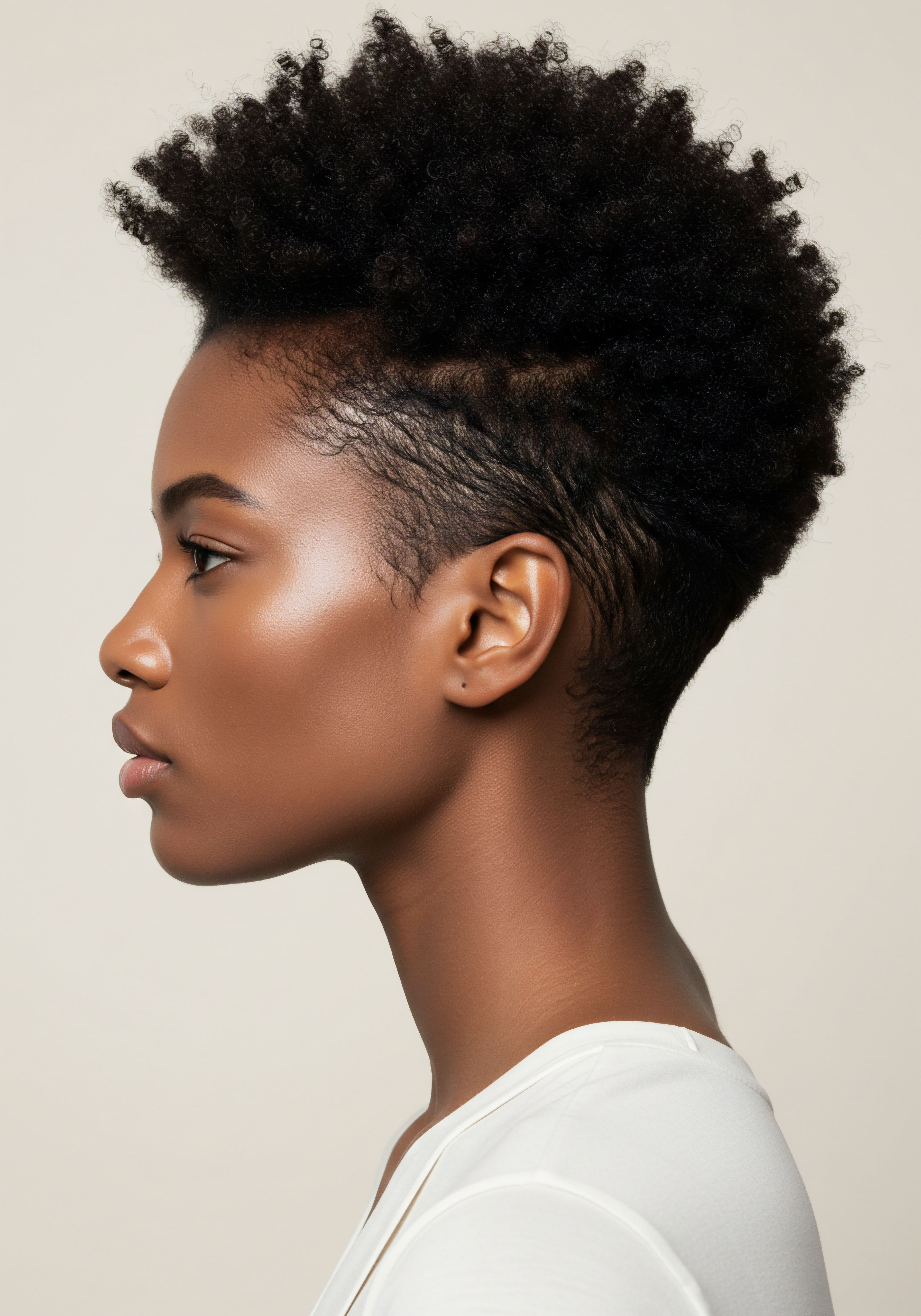
Relay
Having explored the fundamental structure and daily practices that shape coily hair’s moisture narrative, we now ascend to a more profound level of understanding. This section invites us to consider the interplay of biological complexities, environmental dialogues, and even the subtle cultural currents that influence how coily hair interacts with moisture. We will delve into research that challenges conventional wisdom, offering a multi-dimensional perspective on why these exquisite strands often crave additional hydration. It is here that science and lived experience converge, revealing a richer, more interconnected story of coily hair’s relationship with water.
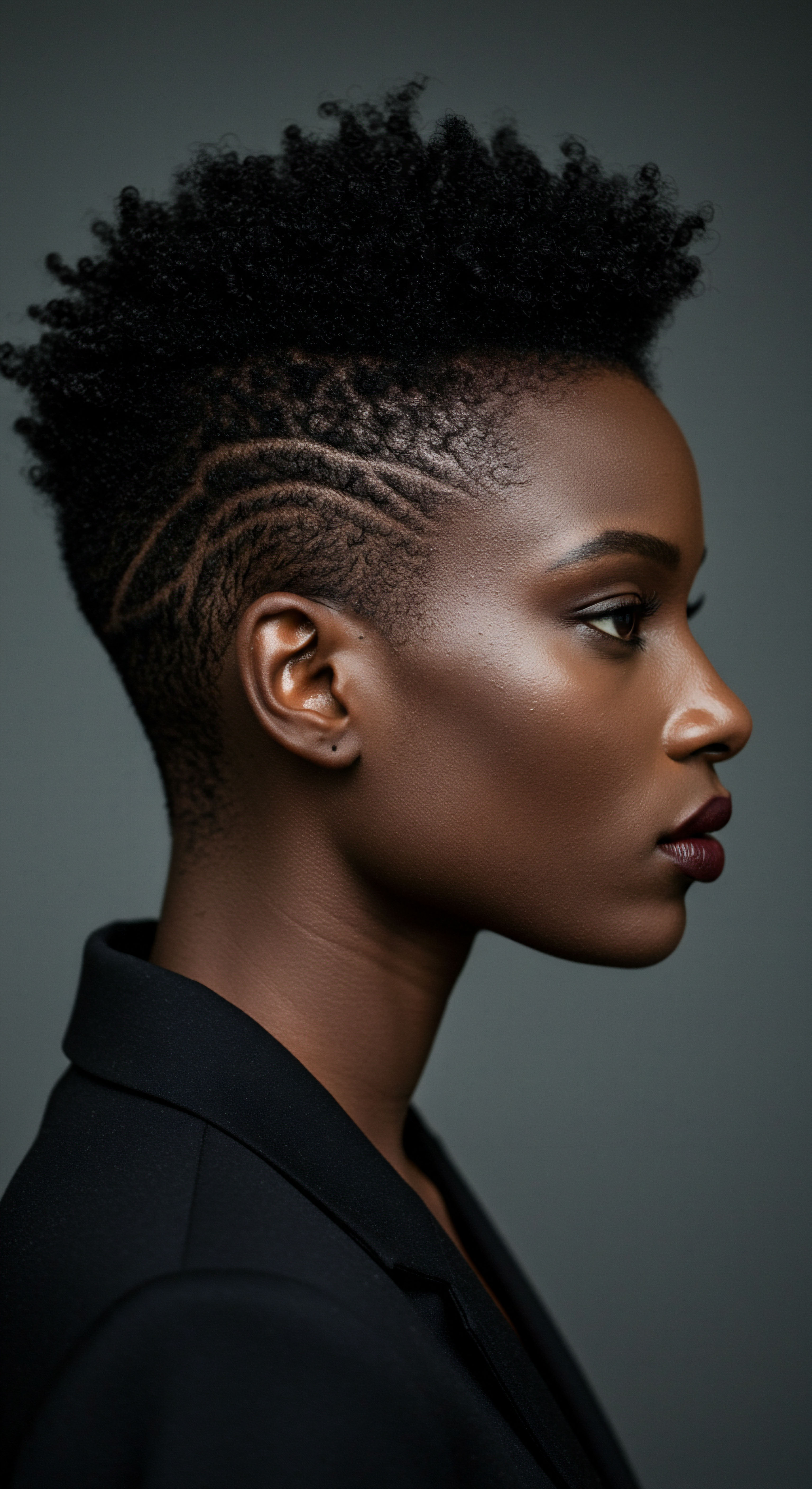
Unraveling the Lipid Paradox
One of the most intriguing findings in hair science, particularly concerning coily textures, revolves around its lipid content. Conventional thought might suggest that hair prone to dryness would possess lower levels of lipids, the fatty molecules that contribute to hair’s protective barrier and sheen. Yet, studies reveal a compelling counter-narrative ❉ Afro-textured hair often exhibits a higher overall lipid content compared to European and Asian hair types.
For instance, research has shown Afro-textured hair can have lipid quantities estimated to be 2.5 to 3.2 times higher than European and Asian hair, respectively, with internal lipid content also significantly elevated. This presents a fascinating paradox ❉ if coily hair contains more lipids, why does it still experience significant moisture loss?
The answer appears to lie not merely in the quantity of lipids, but in their arrangement and the unique structural demands of the coily fiber. Despite this higher lipid content, African hair has been observed to have the lowest lipid ordering and highest water diffusion rate. This suggests that the lipids in coily hair may not form as uniform or as tightly organized a barrier as in straighter hair types. The helical turns and twists of the coily strand could disrupt the continuous alignment of these protective lipid layers, creating microscopic gaps or less efficient hydrophobic domains.
This disruption could allow water to diffuse in and out more freely, leading to the sensation of dryness despite an abundance of natural oils. Some studies even propose that a higher concentration of lipids in African hair might influence the internal keratin structure, preventing its typical, more compact packing arrangement, which could further impact water retention. This deeper understanding moves us beyond simple quantitative measures, inviting us to appreciate the subtle, structural choreography of hair’s molecular components.

Does Hair Swelling Impact Moisture Retention?
The interaction of coily hair with water also presents a unique set of behaviors. When hair absorbs water, it swells. This swelling occurs in both the cortical and cuticle cells. For coily hair, this phenomenon can be particularly pronounced.
A study noted that immersion of hair in water can increase cuticle step-height by over 50%, leading to increased surface roughness and friction. While this swelling allows water to enter, the subsequent increase in surface roughness can also contribute to the rapid release of moisture once the hair begins to dry.
This swelling behavior also connects to the concept of Hygral Fatigue, a term often discussed in the textured hair community. Hygral fatigue refers to the weakening of the hair shaft due to repeated cycles of swelling and de-swelling as it absorbs and releases water. While all hair types can experience this to some degree, the unique structural properties and often higher porosity of coily hair may make it more susceptible to the cumulative effects of these cycles, potentially compromising the integrity of the cuticle over time and exacerbating moisture loss.
| Hair Type Coily Hair |
| Swelling Behavior in Water Pronounced swelling, greater water uptake |
| Surface Friction Upon Hydration Increased surface roughness and friction |
| Hair Type Straighter Hair |
| Swelling Behavior in Water Less pronounced swelling |
| Surface Friction Upon Hydration Increased friction, but often less problematic for styling |
| Hair Type The way hair interacts with water influences its feel and susceptibility to moisture loss. |
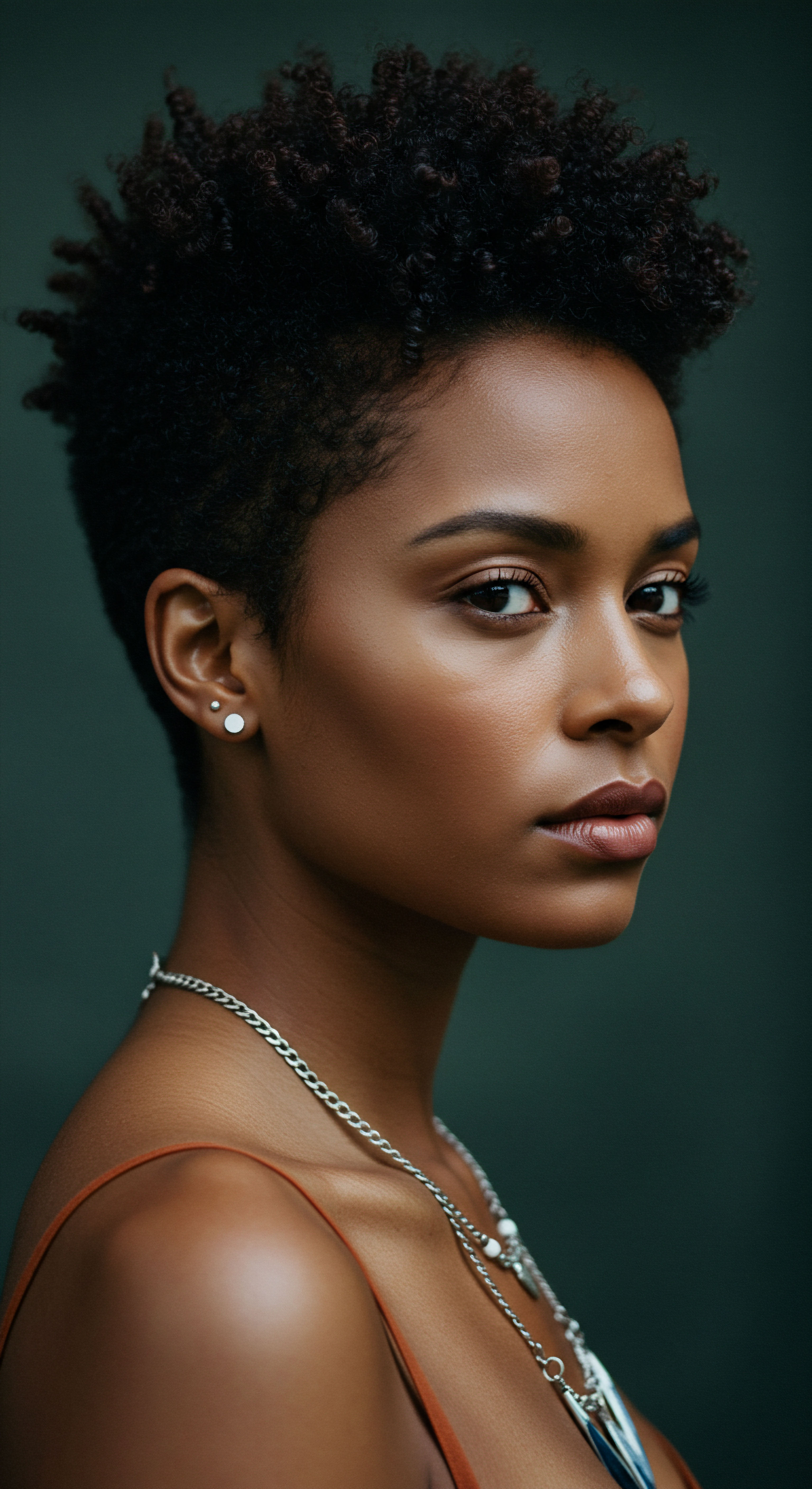
The Environmental Dialogue and Humectant Considerations
The environment plays an undeniable role in coily hair’s moisture balance. Humidity, the concentration of water vapor in the air, directly impacts how hair absorbs or releases moisture. In highly humid conditions, coily hair, with its propensity for high porosity, can absorb excessive water from the atmosphere. While this might seem beneficial, it can lead to the cuticle lifting even further, causing frizz, shrinkage, and a loss of curl definition.
This phenomenon highlights a critical aspect of humectants. While they are celebrated for their ability to draw moisture to the hair, their performance is heavily dependent on the ambient dew point and relative humidity. In very dry environments, humectants can paradoxically draw moisture out of the hair if the air contains less water than the hair itself.
Conversely, in excessively humid conditions, they can cause hair to absorb too much water, leading to undesirable outcomes like excessive swelling and frizz. This delicate balance underscores the importance of adapting product choices to prevailing environmental conditions, moving beyond a one-size-fits-all approach to hydration.
- Dew Point Below 35°F ❉ Humectants may draw moisture from hair.
- Dew Point 35°F to 60°F ❉ Humectants can be beneficial, drawing moisture from the air.
- Dew Point Above 60°F ❉ Hair absorbs more water, leading to frizz; anti-humectants may be preferred.

Cultural Contexts and Hair Practices
Beyond the biological and scientific explanations, the moisture retention of coily hair is also shaped by a rich tapestry of cultural practices and historical contexts. For generations, communities with coily hair textures have developed intricate care routines, often rooted in ancestral knowledge and passed down through families. These practices, which frequently prioritize deep conditioning, oiling, and protective styling, arose from an intuitive understanding of the hair’s need for sustained hydration and protection.
The societal perception of coily hair, historically influenced by Eurocentric beauty standards, has sometimes led to practices that inadvertently compromised its health, such as chemical straightening or excessive heat application. These processes can severely damage the cuticle and cortex, further diminishing the hair’s ability to retain moisture and increasing its susceptibility to breakage. Acknowledging this historical context allows for a more compassionate and informed approach to modern hair care, emphasizing the celebration of natural texture and the adoption of practices that genuinely support its health.
The modern natural hair movement, a powerful reclamation of textured beauty, has brought renewed attention to traditional practices and scientific understanding, advocating for regimens that honor the hair’s inherent characteristics. This movement emphasizes gentle handling, consistent moisture application, and protective measures, all of which contribute to improving the long-term hydration and vitality of coily strands.
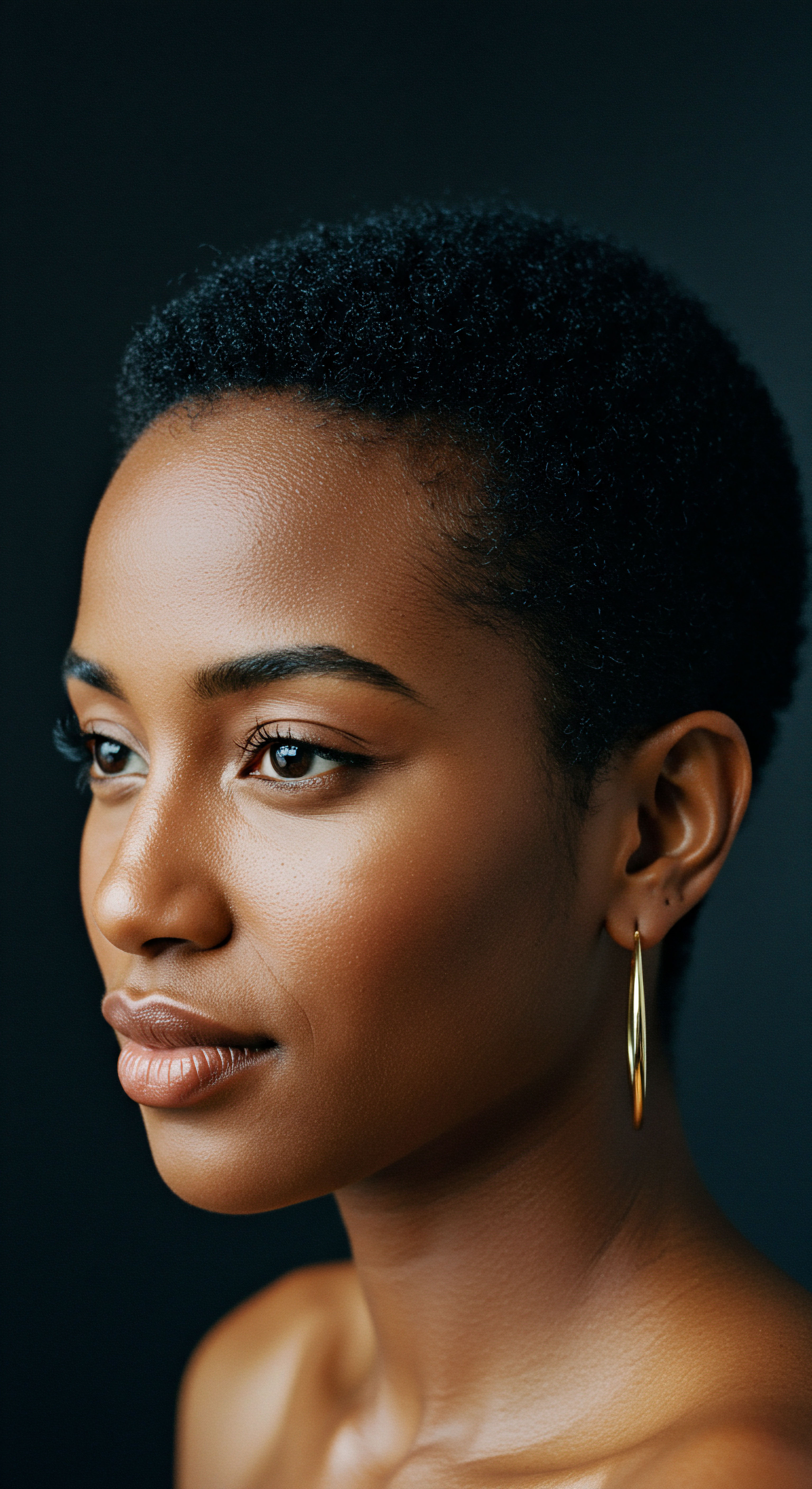
Reflection
Our exploration into why coily hair so readily loses moisture has taken us on a journey from the very architecture of a single strand to the broader influences of science, environment, and culture. We have seen that the question is not simple, but rather a complex interplay of inherited structure, the dance of natural oils, the delicate balance of porosity, and the rhythms of our care rituals. Each coil holds a story, a testament to its unique needs and remarkable resilience. Understanding these nuances invites a deeper appreciation for the beauty and strength inherent in textured hair, moving us toward a more intuitive and gentle approach to its care.
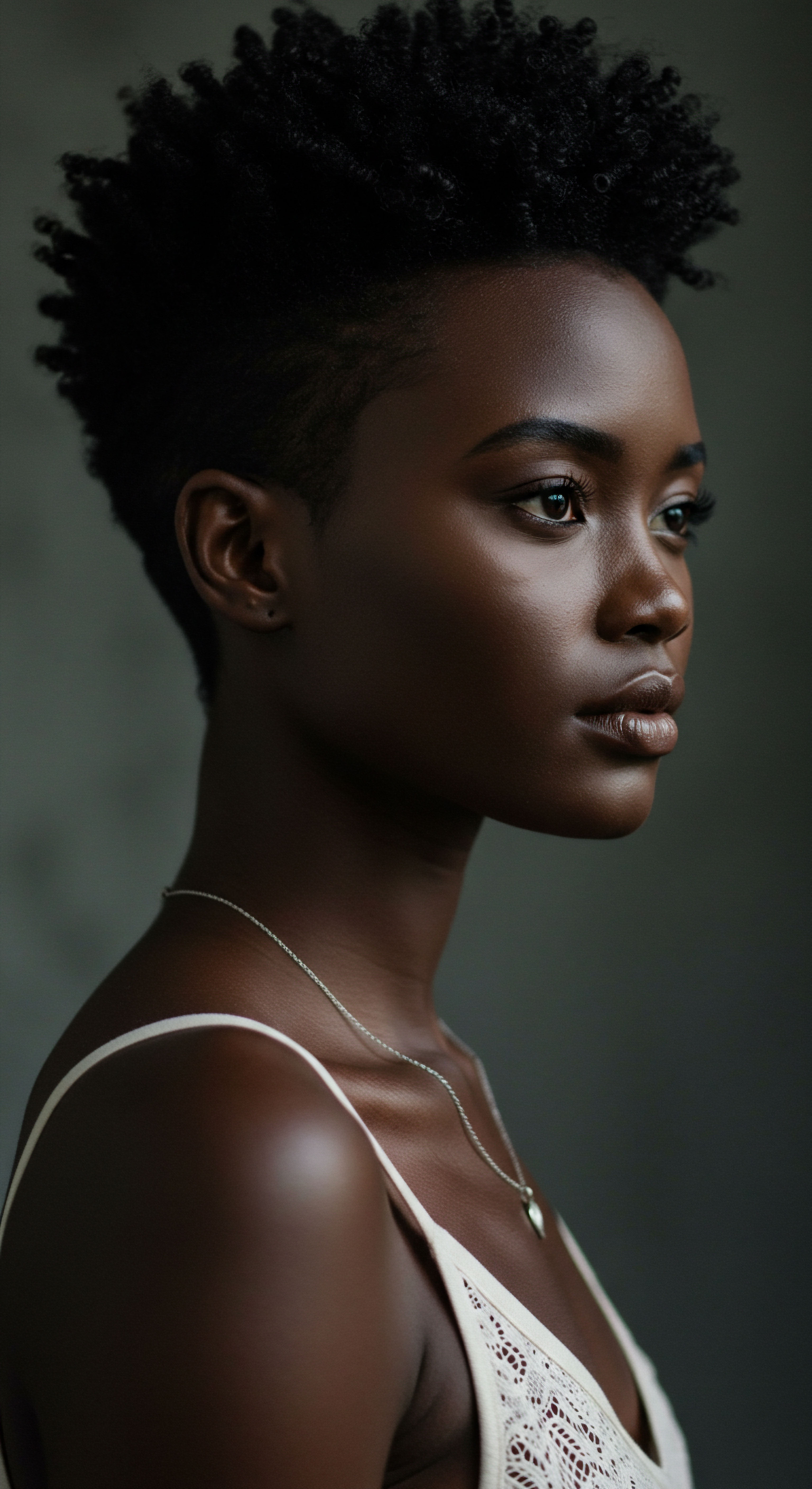
References
- Halal, John. Hair Structure and Chemistry Simplified. 5th ed. Cengage Learning, 2009.
- Robbins, Clarence R. Chemical and Physical Behavior of Human Hair. 5th ed. Springer, 2012.
- Abegunde, Ayinoluwa. The Koyld Hair Guide ❉ A Joy Filled Guide To Fulfilling Your Koily Hair Dreams, Volume 1. 2023.
- Oladele, Deborah B. et al. The Genomic Variation in Textured Hair ❉ Implications in Developing a Holistic Hair Care Routine. Cosmetics, vol. 11, no. 6, 2024, p. 183.
- Coderch, L. et al. The influence of hair lipids in ethnic hair properties. Journal of Cosmetic Science, vol. 57, no. 1, 2006, pp. 49-59.
- Lee, Y. S. et al. The Ethnic Differences of the Damage of Hair and Integral Hair Lipid after Ultra Violet Radiation. Journal of the Society of Cosmetic Scientists of Korea, vol. 39, no. 1, 2013, pp. 53-60.
- Loussouarn, G. et al. Keratins and lipids in ethnic hair. International Journal of Cosmetic Science, vol. 32, no. 6, 2010, pp. 419-428.
- Coderch, L. et al. Ethnic hair ❉ Thermoanalytical and spectroscopic differences. Journal of Cosmetic Science, vol. 60, no. 1, 2009, pp. 91-102.
- TRI Princeton. Hair Moisturization Claims 101. TRI Princeton, 2024.
- TRI Princeton. Hot Topics in Textured Hair Research ❉ Hair Porosity and Hair Braiding Damage. TRI Princeton, 2020.
- Wood, Miranda, and Melissa Leyden. Chemistry of Wellness ❉ Hair and Hair Care. UVA ChemSciComm, 2023.
- Science News. Science works to demystify hair and help it behave. Science News, 2024.